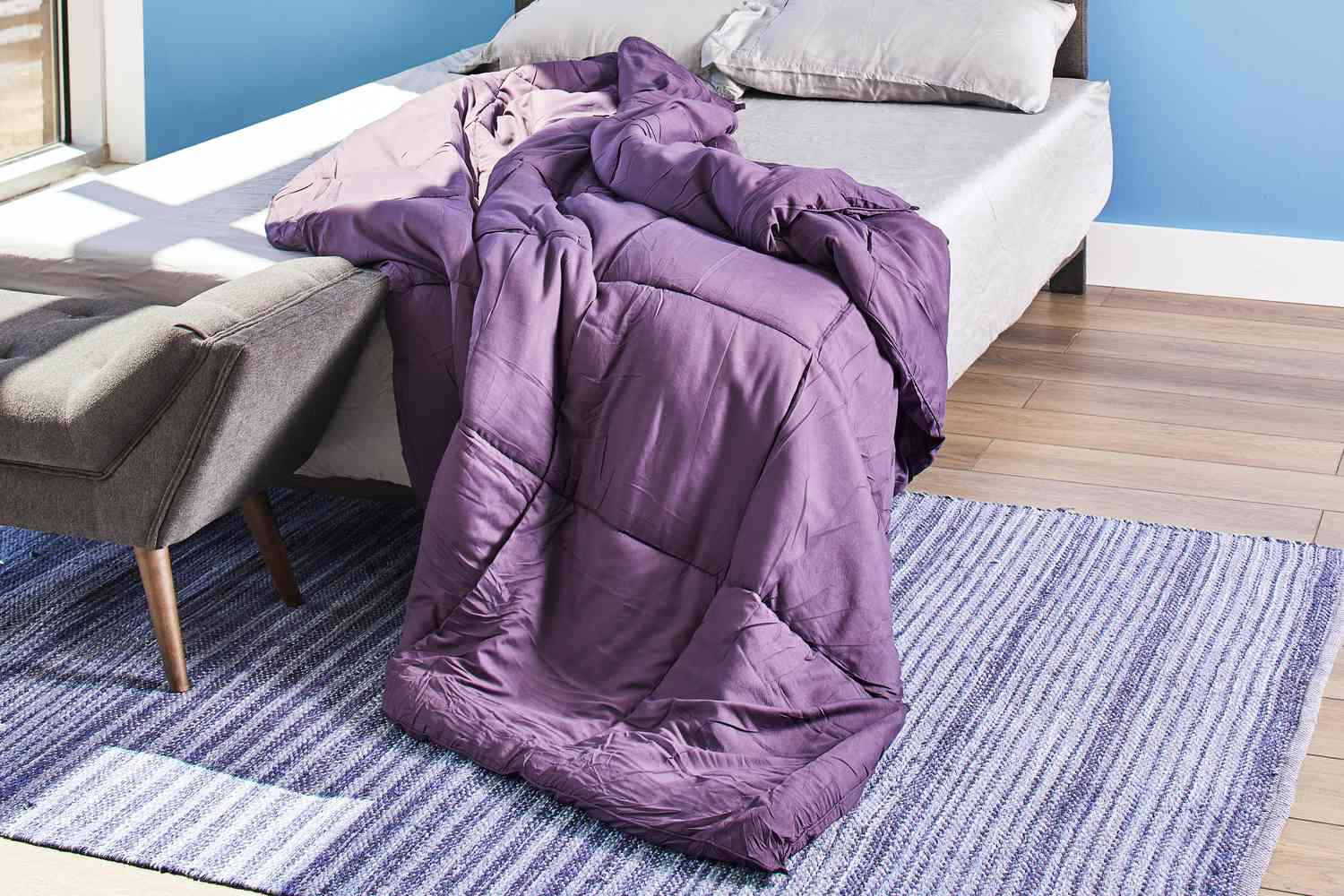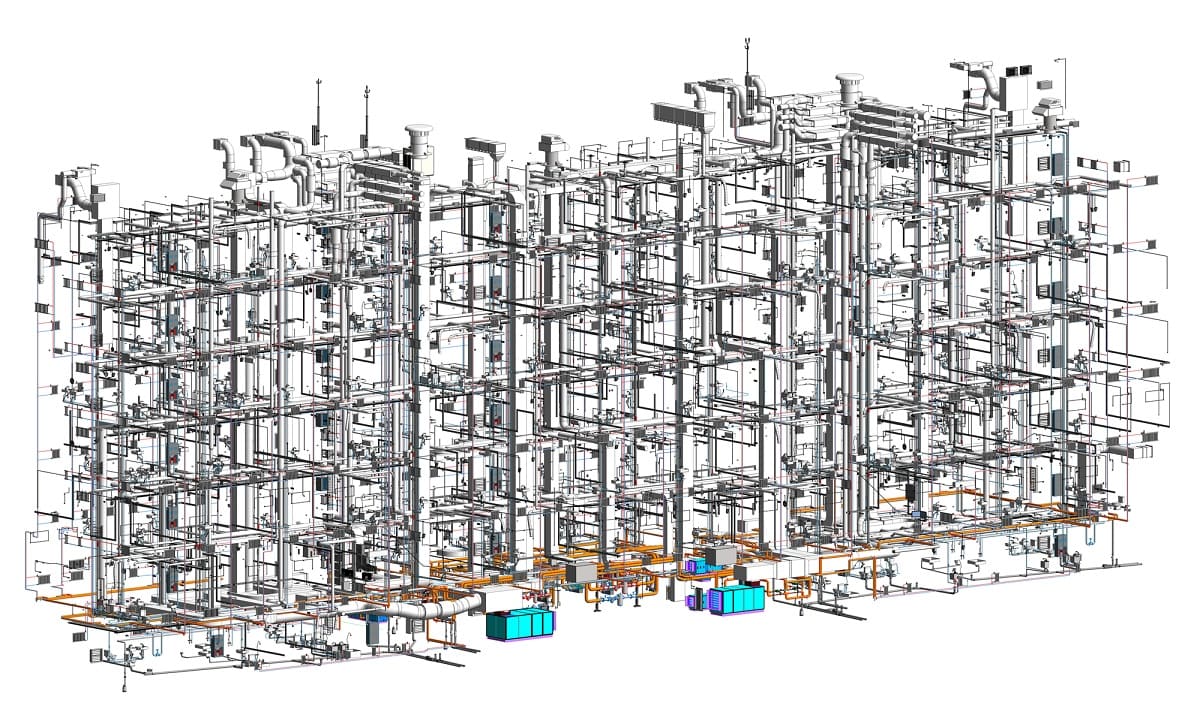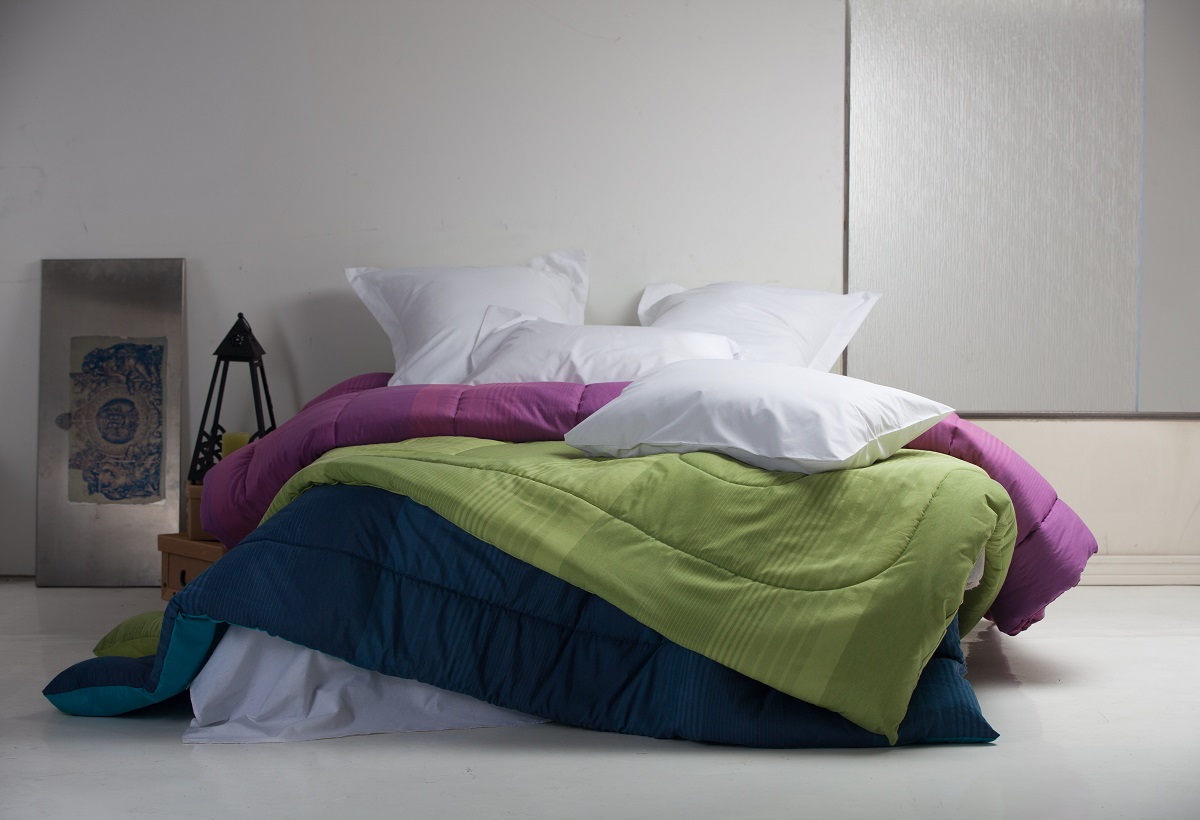Home>Articles>What Is The Difference Between A Coverlet And Duvet


Articles
What Is The Difference Between A Coverlet And Duvet
Modified: February 24, 2024
Discover the key differences between coverlets and duvets in this informative articles [articles]. Learn the best uses and benefits of each to enhance your bedding style.
(Many of the links in this article redirect to a specific reviewed product. Your purchase of these products through affiliate links helps to generate commission for Storables.com, at no extra cost. Learn more)
Introduction
When it comes to selecting bedding for your bedroom, there are numerous options available to you. Two popular choices are coverlets and duvets. While they may sound similar, they actually differ in design, size, functionality, and maintenance requirements. Understanding the differences between coverlets and duvets can help you make an informed decision about which one is best suited for your needs.
In this article, we will explore the definitions of coverlets and duvets, and delve into their differences in design, size, functionality, maintenance, and more. By the end, you will have a clearer understanding of the distinctions between these two bedding options.
Key Takeaways:
- Coverlets are lightweight, decorative, and ideal for warmer climates, offering style and elegance to your bedroom decor. They are versatile, easy to maintain, and provide a polished look to the bed ensemble.
- Duvets prioritize warmth, insulation, and customization, making them perfect for colder climates and a cozy sleep experience. They offer functionality, durability, and the flexibility to match your decor style.
Definition of a Coverlet
A coverlet is a lightweight bedspread or top layer of bedding that is typically used for decorative purposes. It is designed to cover the entire bed and extend to the floor, providing a clean and polished look to the overall aesthetic of the bedroom.
Coverlets are usually made from a variety of materials, including cotton, linen, or polyester. They come in various designs, patterns, and colors, allowing you to easily match them with your existing bedroom decor. They are often quilted or woven, providing added texture and visual interest. Some coverlets may also feature intricate stitching or embroidery, adding a touch of elegance to the bed.
Coverlets are typically thinner and lighter than comforters or duvets, making them suitable for warmer climates or as a decorative layer during the summer months. They are often used as a standalone bedding option, eliminating the need for additional layers. However, they can also be layered with a blanket or sheet for added warmth during colder seasons.
One key characteristic of a coverlet is its size. Unlike duvets, coverlets are designed to fully cover the bed and hang down to the floor on all sides, creating a sleek and tailored appearance. This makes them ideal for beds with bed frames or platforms that do not require a bed skirt.
Overall, coverlets provide a stylish and decorative element to your bedroom decor, while also offering some degree of warmth and comfort. Their versatility, lightweight nature, and aesthetic appeal make them a popular choice for those looking to enhance the visual appeal of their bedroom.
Definition of a Duvet
A duvet is a type of bedding that consists of a soft, flat bag filled with various materials, such as down feathers, synthetic fibers, or a combination of both. It is designed to be used as a warm covering that goes on top of the mattress and provides insulation and comfort during sleep.
Duvets typically have a removable cover, similar to a pillowcase, known as a duvet cover. The cover not only protects the duvet itself but also allows for easy washing and customization, as it can be changed to match different bedroom aesthetics.
One of the distinguishing features of a duvet is its size. Duvets are designed to fit perfectly within a duvet cover, usually larger than the actual mattress, providing a luxurious and cozy appearance on the bed. They are available in different sizes to accommodate various bed sizes, ranging from twin to king.
Unlike coverlets, which are primarily used for decorative purposes, duvets are meant to provide warmth and insulation. The filling material inside the duvet traps air, creating a layer that helps to retain body heat and keep you comfortably warm throughout the night. This makes duvets especially suitable for colder climates or for those who prefer a cozy and snuggly sleep experience.
Duvets often feature sewn-in patterns, known as baffles or channels, to keep the filling evenly distributed. This prevents clumping and ensures consistent warmth. They may also have corner loops or ties to secure the duvet inside the duvet cover, preventing it from shifting or bunching up.
With a duvet, you have the flexibility to vary the level of warmth by choosing a duvet fill that suits your preferences. Down-fill duvets provide excellent insulation and are lightweight, while synthetic-fill duvets are hypoallergenic and easier to maintain.
Overall, duvets offer a combination of comfort, warmth, and customization. They are a popular choice for individuals looking for a cozy and luxurious bedding option that can be easily customized to match their style and preferences.
Differences in Design and Construction
When it comes to design and construction, coverlets and duvets have distinct features that set them apart.
Coverlets are often characterized by their decorative patterns, quilting, or intricate stitching. They are designed to add a touch of elegance and visual interest to the bed. The stitching can be done in various patterns, such as diamond, geometric, or floral, creating a textured and dimensional look. Coverlets can also come in different styles, including matelassé, which features a raised pattern, or jacquard, which showcases intricate woven designs.
Duvets, on the other hand, have a simpler design. They typically have a plain, solid color or a subtle pattern, as the main focus is on the duvet cover. The simplicity of the duvet allows for versatility in terms of selecting different duvet covers to match different decor styles. Duvets are often channel- or box-stitched to keep the filling in place and ensure even distribution of warmth throughout.
In terms of construction, coverlets are usually thinner and lighter compared to duvets. They are often made with a single layer of fabric, sometimes with added padding or quilting for texture. The lightweight construction of coverlets makes them suitable for layering or using as a standalone bedding option during warmer seasons.
In contrast, duvets are typically filled with materials such as down feathers or synthetic fibers, which provide insulation and warmth. The filling is evenly distributed throughout the duvet to prevent cold spots. The construction of duvets allows for excellent heat retention, making them ideal for colder climates or individuals who prefer extra warmth during sleep.
Overall, the design and construction of coverlets and duvets reflect their intended purposes, with coverlets emphasizing decorative elements and duvets focusing on functionality and comfort.
Differences in Size and Fit
When it comes to size and fit, coverlets and duvets have notable differences that affect their compatibility with different bed sizes and styles.
Coverlets are designed to fully cover the bed and drape down to the floor on all sides. They are typically larger than the mattress, creating a polished and tailored appearance. Coverlets come in various sizes, such as twin, full, queen, and king, allowing you to choose the one that best matches your bed dimensions. They are also available in different drop lengths to accommodate different bed heights.
On the other hand, duvets are sized to fit within a duvet cover, which is typically larger than the mattress. The oversized nature of duvets allows for a luxurious and cozy aesthetic. Duvets come in standard sizes, including twin, full, queen, and king, as well as larger sizes like California king or super king for oversized beds. It’s important to select a duvet size that coordinates with the size of your duvet cover for a proper fit.
Coverlets are designed to be used as a top layer, covering the entire bed. They are ideal for beds with bed frames or platforms that do not require a bed skirt. The floor-length drop of coverlets adds a clean and polished look to the bed ensemble without the need for additional accessories.
On the other hand, duvets are typically used as an insert that goes inside a duvet cover. The cover acts as a protective layer and can be easily removed for washing or changing the style. Duvets can be used with or without a bed skirt, depending on your preference.
It’s important to note that when selecting a coverlet or a duvet, you should consider the dimensions of your bed and the style you want to achieve. Considering the size and fit of the bedding will ensure that it complements the overall aesthetics of your bedroom.
Differences in Functionality
When it comes to functionality, coverlets and duvets offer distinct advantages and serve different purposes in terms of comfort, use, and versatility.
Coverlets are primarily used for decorative purposes. They add style and elegance to the bed, enhancing the overall aesthetics of the bedroom. Their lightweight construction makes them ideal for warmer climates or as a decorative layer during the summer months. Coverlets can be used as a standalone bedding option or layered with a blanket or sheet for added warmth during colder seasons.
Due to their decorative nature, coverlets are often not as thick or insulated as duvets, providing a lighter and more breathable option for those who prefer a cooler sleep experience. They are also easy to fold and store when not in use.
Duvets, on the other hand, are designed with functionality and comfort in mind. They are filled with materials like down feathers or synthetic fibers, offering excellent insulation and warmth. Duvets are suitable for colder climates or for those who prefer a cozy and snuggly sleep experience.
One of the key advantages of duvets is their versatility. The removable duvet cover allows for easy cleaning and customization. You can easily change the duvet cover to match your bedroom decor or embrace different styles. Additionally, duvets can be easily fluffed and reshaped for a plush and inviting look.
Another advantage of duvets is their ability to act as a standalone bedding option. Unlike coverlets, which often require additional layers, duvets can be used on their own, without the need for a separate blanket or sheet. This makes them convenient and time-saving, especially when it comes to making the bed.
Overall, coverlets are primarily decorative in nature, adding style and visual interest to the bed, while duvets prioritize functionality, offering warmth, insulation, and versatility.
Differences in Maintenance and Cleaning
When it comes to maintenance and cleaning, coverlets and duvets have different care requirements due to their construction and design.
Coverlets are typically easier to maintain and clean compared to duvets. Since they are lightweight and often made from materials like cotton or polyester, coverlets can usually be machine-washed and dried. It is recommended to follow the manufacturer’s instructions for specific care guidelines, such as using a gentle cycle or cold water for washing.
When it comes to cleaning coverlets, spot cleaning may also be an option depending on the fabric and any decorative elements like quilting or embroidery. However, it is important to address stains as soon as possible to prevent them from setting in.
Duvets, on the other hand, require more careful maintenance due to their filling and construction. Most duvets should not be machine-washed, as the agitation can cause damage or clumping of the fill. Instead, they often need to be professionally cleaned or spot-cleaned as necessary.
Duvet covers, which can be removed and washed separately, are easier to clean. It is recommended to wash the duvet cover regularly to keep it fresh and free from dust or allergens. This also allows for easy customization, as duvet covers come in various designs and can be changed to match different decor styles.
When it comes to storing coverlets and duvets, coverlets are generally easier to fold and store due to their lightweight construction. They can be folded neatly and stored in a linen closet or drawer when not in use.
Duvets, on the other hand, require careful storage to maintain their loft and prevent flattening. It is best to store duvets in breathable storage bags or containers, in a cool and dry environment to avoid moisture buildup.
Overall, coverlets are generally easier to maintain and can be machine-washed, while duvets require more specialized care and often need to be professionally cleaned or spot-cleaned. The removable duvet cover provides added convenience for cleaning and customization.
Pros and Cons of Coverlets
Coverlets offer several advantages and disadvantages that you should consider when deciding if they are the right bedding option for you:
Pros:
- Decorative Appeal: Coverlets add style and elegance to your bedroom decor. They come in various designs, patterns, and colors, allowing you to easily match them with your existing decor.
- Lightweight and Breathable: Coverlets are typically thinner and lighter than duvets, making them suitable for warmer climates or as a decorative layer during the summer months.
- Versatility: Coverlets can be used as standalone bedding or layered with a blanket or sheet for added warmth during colder seasons. They can also be easily folded and stored when not in use.
- Easy Maintenance: Coverlets are usually machine-washable and easy to maintain. They can be cleaned regularly without much hassle.
Cons:
- Limited Insulation: Due to their lightweight construction, coverlets provide limited insulation compared to duvets. They are not as suitable for colder climates or individuals who prefer extra warmth during sleep.
- Less Coziness: Coverlets may not offer the same level of comfort and coziness as duvets, as they are primarily used for decorative purposes rather than maximum comfort.
- Difficulty in Stain Removal: Depending on the fabric and any decorative elements, stain removal from coverlets may be challenging. Some fabrics may require spot cleaning or specific cleaning products to address stains effectively.
- May Require Additional Layers: In colder seasons, coverlets may require additional layers, such as blankets or sheets, to provide adequate warmth. This adds extra time and effort to making the bed.
Considering these pros and cons will help you evaluate whether coverlets align with your preferences and requirements for bedding.
Pros and Cons of Duvets
Duvets offer several advantages and disadvantages that you should consider when deciding if they are the right bedding option for you:
Pros:
- Warmth and Insulation: Duvets excel at providing warmth and insulation, making them ideal for colder climates or individuals who prefer a cozy sleep experience.
- Customizability: The removable duvet cover allows for easy customization to match your decor style. You can change the duvet cover to suit different seasons or update the look of your bedroom.
- Versatility: Duvets can be used on their own as a standalone bedding option, eliminating the need for additional layers or blankets. This makes making the bed quicker and more convenient.
- Durability: Duvets are designed to withstand regular use and can maintain their loft and structural integrity over time.
Cons:
- Increased Weight and Bulk: Duvets are generally heavier and bulkier compared to coverlets, which may make them less suitable for warmer climates or individuals who prefer lightweight bedding.
- Greater Maintenance Requirements: Duvets often require specialized care and cleaning. The duvet itself is usually not machine-washable and may require professional cleaning instead. However, the duvet cover is easy to remove and clean separately.
- Higher Initial Cost: Duvets, especially those filled with premium materials such as down feathers, tend to have a higher price point compared to coverlets or other bedding options.
- Clumping of Fill: Over time, the filling inside duvets may shift or clump, requiring occasional fluffing or redistribution to maintain an even loft.
Considering these pros and cons will help you evaluate whether duvets align with your preferences and requirements for bedding.
Which One Should You Choose?
Choosing between a coverlet and a duvet depends on your personal preferences, needs, and the overall look you want to achieve in your bedroom. Here are some factors to consider when making a decision:
Climate:
Consider the climate where you live. If you reside in a warmer region or prefer a lighter bedding option, a coverlet may be a more suitable choice. Coverlets are lightweight and breathable, making them ideal for use in warmer climates or during the summer months. On the other hand, if you live in a colder climate or prefer a cozier feel, a duvet can provide the warmth and insulation you need.
Decorative Style:
Take into account your aesthetic preferences and the overall decor style of your bedroom. If you are looking to enhance the visual appeal of your bed and create a polished, stylish look, a coverlet with decorative patterns or intricate stitching can be a great option. Coverlets come in various designs, patterns, and colors, allowing for customization to match your decor style. However, if you prefer a simpler and more versatile option that allows for easy customization, a duvet with a removable cover may be more suitable.
Functionality:
Consider how you intend to use your bedding and the level of functionality you require. Coverlets are primarily used for decorative purposes, adding style and elegance to the bed ensemble while providing some degree of warmth. If you prefer a bedding option that offers more insulation, warmth, and versatility, a duvet may be a better choice. Duvets are designed to provide warmth and coziness, making them ideal for colder climates or individuals who prefer a snuggly sleep experience.
Maintenance:
Think about the level of maintenance you are willing to commit to. Coverlets are typically easier to clean and maintain, as they are often machine-washable and can be easily folded and stored. Duvets, on the other hand, may require more specialized care. While the duvet cover is removable and can be machine-washed, the duvet itself may require professional cleaning or spot-cleaning as needed.
Cost:
Consider your budget. Coverlets are generally more affordable compared to duvets. However, the price can vary depending on the material, design, and brand. Duvets, especially those filled with premium materials like down feathers, may have a higher price point. Take into account the long-term investment and the value you place on comfort and durability.
In the end, the choice between a coverlet and a duvet ultimately depends on your personal preferences, needs, and the specific requirements of your sleeping environment. It may also be a matter of personal preference to have both options available, allowing you to switch between them based on the season or your mood. Assess your priorities and make a decision that best suits your unique preferences and lifestyle.
When choosing between a coverlet and a duvet, consider the level of warmth and the overall look you want to achieve in your bedroom. A coverlet is lightweight and decorative, while a duvet is thicker and provides more warmth.
Conclusion
When it comes to choosing between a coverlet and a duvet, there are several factors to consider. Coverlets are primarily used for decorative purposes, offering style, elegance, and a lightweight option for warmer climates. They provide a polished look to the bed ensemble, with various designs and patterns to match your personal style. On the other hand, duvets prioritize functionality and comfort, offering warmth, insulation, and versatility. Their removable covers allow for easy customization and cleaning.
Climate, personal style, functionality, maintenance, and budget are important considerations when making a decision. If you live in a warmer climate or prefer a lightweight, decorative option, a coverlet may be the best choice. If warmth, coziness, and customization are your priorities, a duvet would be the better option, especially in colder climates. It’s important to evaluate your own preferences, needs, and the overall aesthetic of your bedroom. Consider factors such as climate, decorative style, functionality, maintenance requirements, and budget constraints. Ultimately, the choice between a coverlet and a duvet should align with your personal preferences and lifestyle. Furthermore, it’s worth noting that you don’t necessarily have to choose between the two. You may opt to have both options available, allowing you to switch between them based on the season or your mood. This offers the benefit of having decorative options as well as cozy, warm bedding when needed. In conclusion, whether you decide to go with a coverlet or a duvet, both options have their own advantages and can contribute to a comfortable and stylish bedroom. By considering your preferences and needs, you can make an informed decision that enhances your sleeping experience and elevates the overall look of your bedroom decor.
Frequently Asked Questions about What Is The Difference Between A Coverlet And Duvet
Was this page helpful?
At Storables.com, we guarantee accurate and reliable information. Our content, validated by Expert Board Contributors, is crafted following stringent Editorial Policies. We're committed to providing you with well-researched, expert-backed insights for all your informational needs.












0 thoughts on “What Is The Difference Between A Coverlet And Duvet”